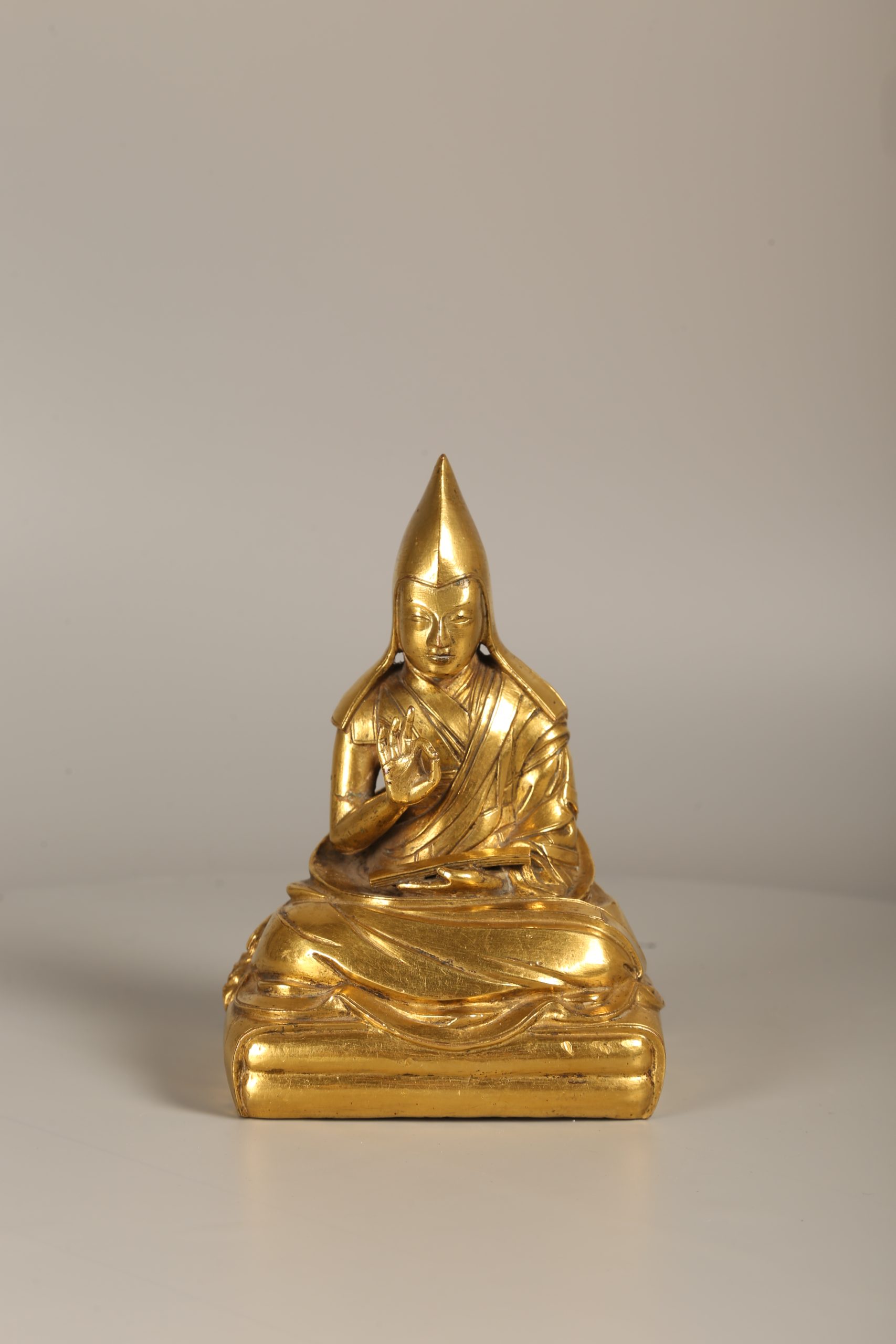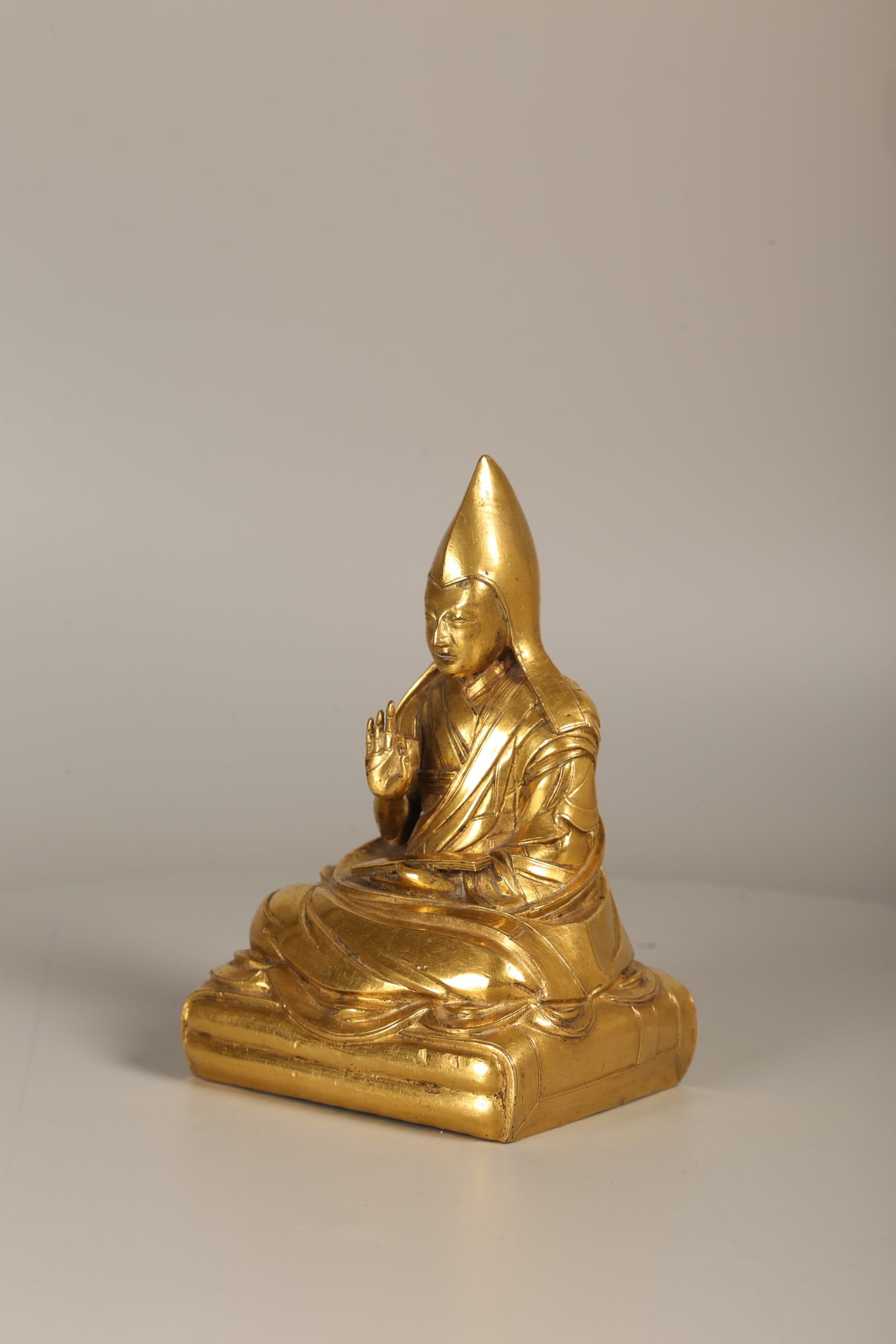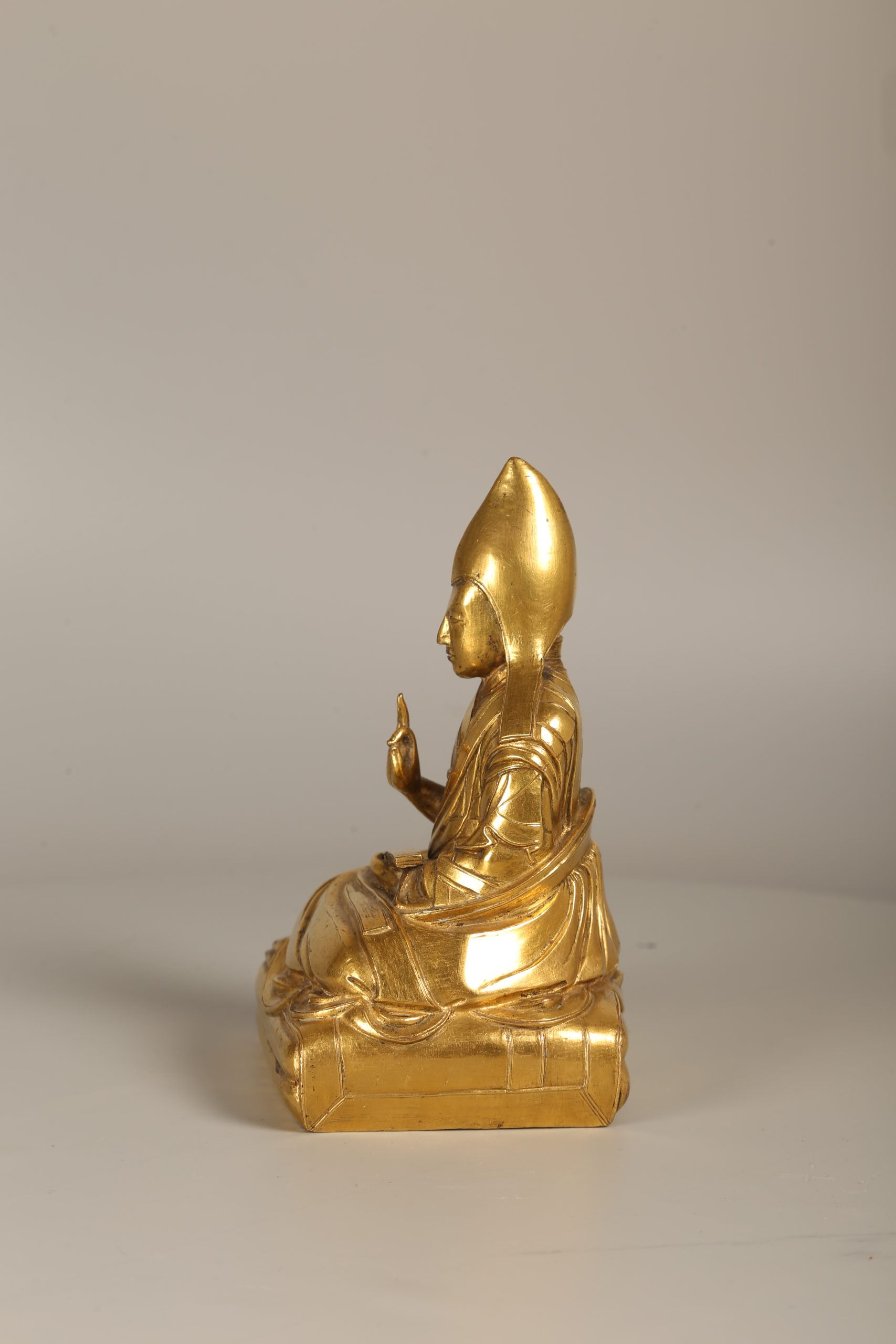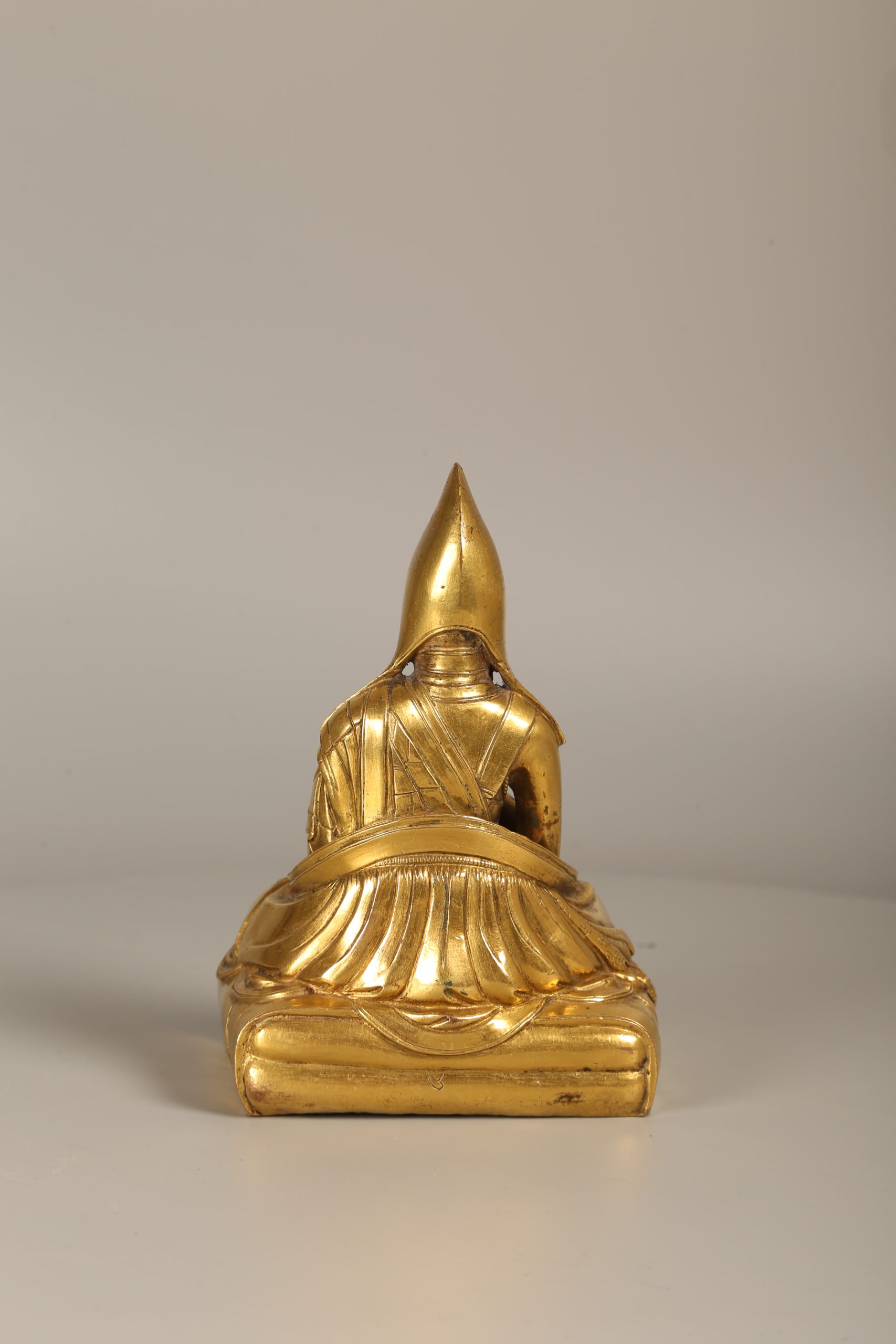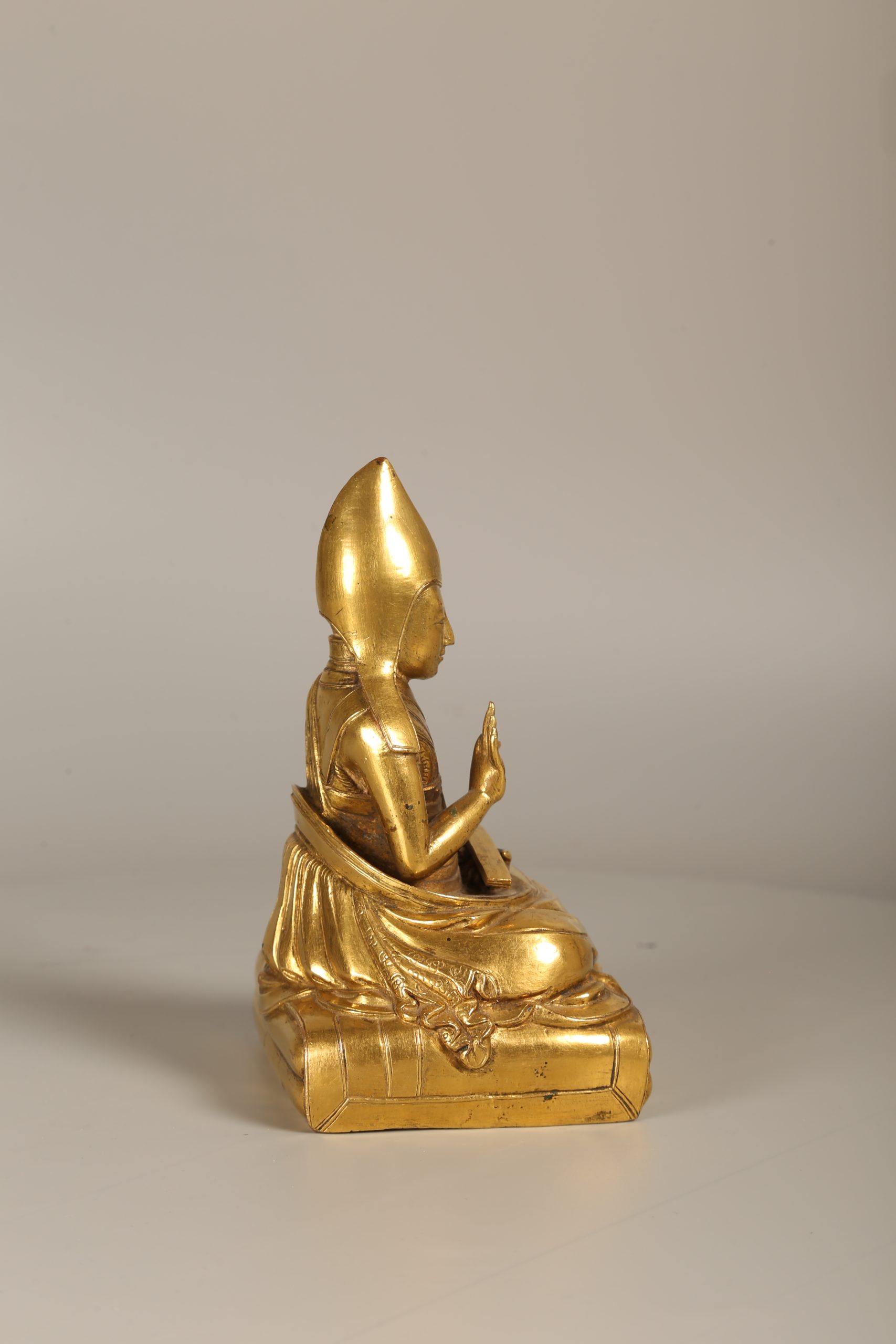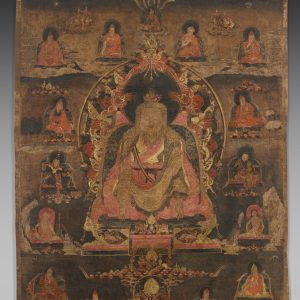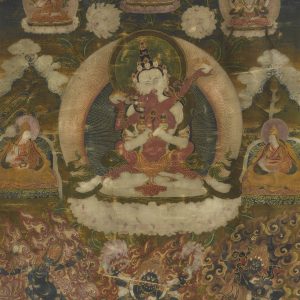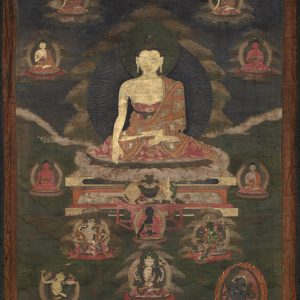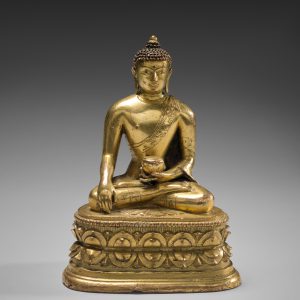Lama
18 000,00€
Gilded bronze
Tibet
18th century
H. 15 cm or 6 in
Description
This charming eighteenth-century Tibetan statuette depicts a “lama,” i.e., a monk in the first rank of the ecclesiastical hierarchy. Wearing the yellow, pointed headdress prescribed by the missionary Atīśa (c. 982-1054), he is a master of the dGe-lugs-pa school.
With his right hand, he sketches the teaching gesture and holds a book of his own with his left hand. These two gestures are those of many illustrious monks: the first Dalai Lama, the second and the fourth all have such iconography. Another honorific feature is that the monk is resting here on a carpet covering two superimposed cushions.
Stylistically, the bronze is remarkably worked: the face is idealized, with relatively youthful features, the lowered eyes filled with interiority. The heavy cloak, with its large and particularly vibrant folds, falls in a “natural” way, as it would on a Chinese sculpture.
One can assume that such a statuette was part of a series of pontiffs placed in niches in the woodwork of a chapel. More recently, it was the property of a private European collection.

